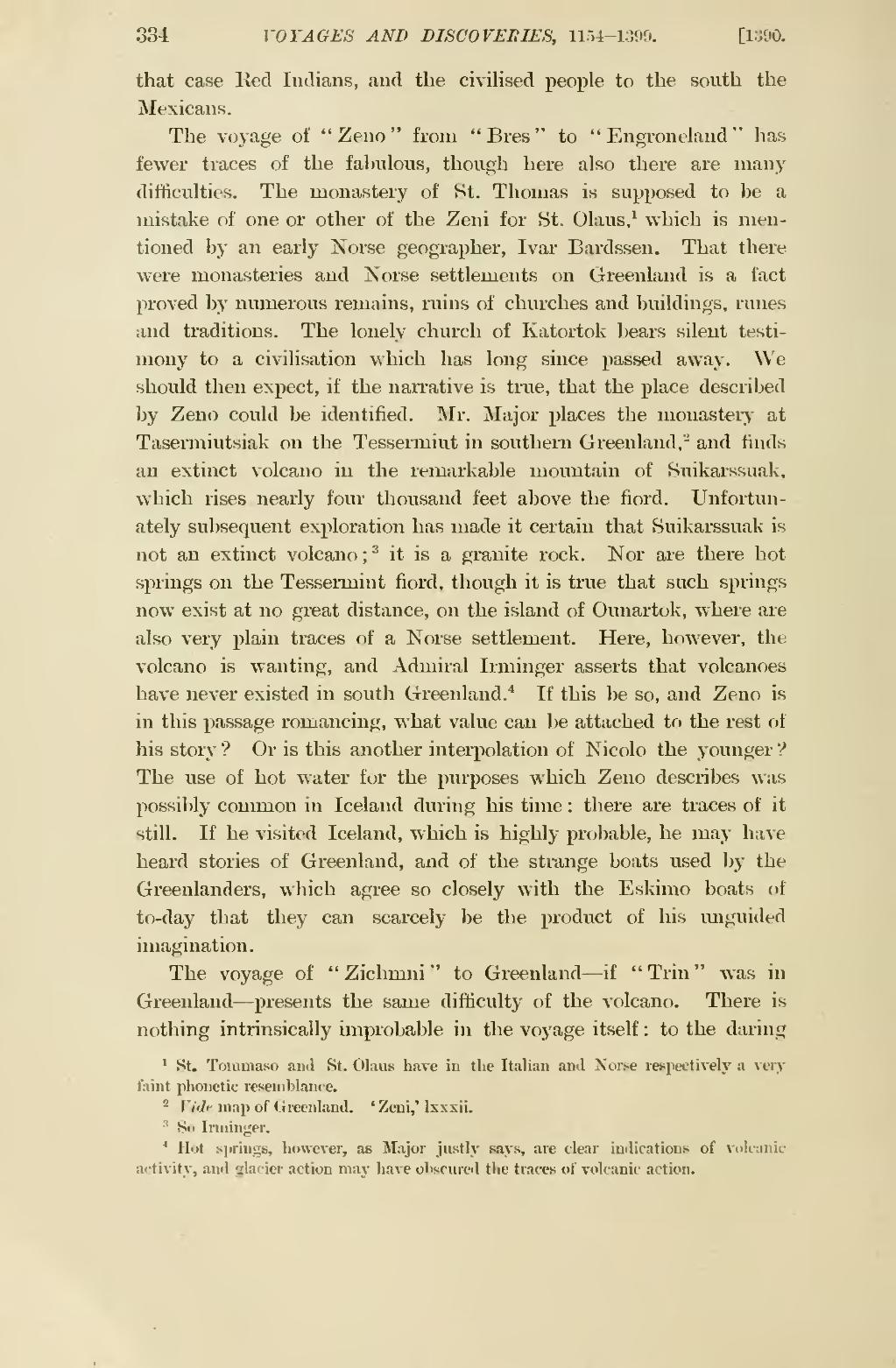that case Red Indians, and the civilised people to the south the Mexicans.
The voyage of "Zeno" from "Bres" to "Engroneland" has fewer traces of the fabulous, though here also there are many difficulties. The monastery of St. Thomas is supposed to be a mistake of one or other of the Zeni for St. Olaus,[1] which is mentioned by an early Norse geographer, Ivar Bardssen. That there were monasteries and Norse settlements on Greenland is a fact proved by numerous remains, ruins of churches and buildings, runes and traditions. The lonely church of Katortok bears silent testimony to a civilisation which has long since passed away. We should then expect, if the narrative is true, that the place described by Zeno could be identified. Mr. Major places the monastery at Tasermiutsiak on the Tessermiut in southern Greenland,[2] and finds an extinct volcano in the remarkable mountain of Suikarssuak, which rises nearly four thousand feet above the fiord. Unfortunately subsequent exploration has made it certain that Suikarssuak is not an extinct volcano;[3] it is a granite rock. Nor are there hot springs on the Tessermiut fiord, though it is true that such springs now exist at no great distance, on the island of Ounartok, where are also very plain traces of a Norse settlement. Here, however, the volcano is wanting, and Admiral Irminger asserts that volcanoes have never existed in south Greenland.[4] If this be so, and Zeno is in this passage romancing, what value can be attached to the rest of his story? Or is this another interpolation of Nicolo the younger? The use of hot water for the purposes which Zeno describes was possibly common in Iceland during his time: there are traces of it still. If he visited Iceland, which is highly probable, he may have heard stories of Greenland, and of the strange boats used by the Greenlanders, which agree so closely with the Eskimo boats of to-day that they can scarcely be the product of his unguided imagination.
The voyage of "Zichmni" to Greenland — if "Trin" was in Greenland — presents the same difficulty of the volcano. There is nothing intrinsically improbable in the voyage itself: to the daring
- ↑ St. Tommaso and St. Olaus have in the Italian and Norse respectively a very faint phonetic resemblance.
- ↑ Vide map of Greenland. 'Zeni,' lxxxii.
- ↑ So Irminger.
- ↑ Hot springs, however, as Major justly says, are clear indications of volcanic activity, and glacier action may have obscured the traces of volcanic action.

